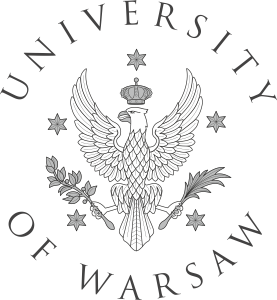Laboratory of Molecular Modeling
LABORATORY OF MOLECULAR MODELING
Lab leader:
Prof. dr hab. Sławomir Filipek
Independent research workers:
- Prof. dr hab. Jan S. Jaworski
Other staff:
- Dr Elżbieta Wagner
- Dr Przemysław Miszta
- Mgr Paweł Pasznik – IT
PhD students:
- Mgr Krzysztof Młynarczyk
- Mgr Aleksander Dębiński
- Mgr Jakub Jakowiecki
Website address:
Research subjects:
- Modeling of membrane proteins and ligand-protein complexes.
- Ligand docking and drug design.
- Study of assembling and dynamics of protein oligomers, including amyloids.
- Simulation studies of lipidic cubic phases.
- Development of coarse-grained methods of molecular dynamics of proteins.
Major scientific achievements:
- Yuan, Q. Peng, K. Palczewski, H. Vogel, S. Filipek, „Mechanistic studies on the stereoselectivity of the serotonin 5-HT1A receptor „, Angew. Chem. Int. Ed. (2016) 55, 8661-8665. doi: 10.1002/anie.201603766
- Latek, M. Bajda, S. Filipek, „A hybrid approach to structure and function modeling of G protein-coupled receptors”, J. Chem. Inf. Model. (2016) 56, 630-641. doi: 10.1021/acs.jcim.5b00451
- Yuan, K. Palczewski, Q. Peng, M. Kolinski, H. Vogel, S. Filipek, „The mechanism of ligand-induced activation or inhibition of μ- and κ-opioid receptors”, Angew. Chem. Int. Ed. (2015) 54, 7560-7563. doi: 10.1002/anie.201501742
- Yuan, H. Vogel, S. Filipek, “The Role of Water and Sodium Ions in the Activation of the mu-Opioid Receptor”, Angew. Chem. Int. Ed. (2013) 52, 10112-10115. doi: 10.1002/anie.201302244.
- Latek, B. Trzaskowski, S. Niewieczerzał, P. Miszta, K. Młynarczyk, A. Debinski, W. Pulawski, S. Yuan, S. Filipek, chapter „Modeling of Membrane Proteins” in „Computational Methods to Study the Structure and Dynamics of Biomolecules and Biomolecular Processes”, A. Liwo (Ed.), series in Bio-/Neuroinformatics, Springer-Verlag, Berlin Heidelberg, vol. 1, 2014, pp. 357–431. doi: 10.1007/978-3-642-28554-7_12.
- Trzaskowski, D. Latek, S. Yuan, U. Ghoshdastider, A. Debinski, S. Filipek, “Action of molecular switches in GPCRs – theoretical and experimental studies”, Curr. Med. Chem. (2012) 19, 1090-1109. doi:10.2174/092986712799320556
- Fotiadis, Y. Liang, S. Filipek, D.A. Saperstein, A. Engel, K. Palczewski, “Atomic force microscopy: Rhodopsin dimers in native disc membranes”, Nature (2003) 421, 127-128. doi:10.1038/421127a
- Serwis internetowy do modelowania homologicznego receptorów GPCR: http://www.biomodellab.eu/services/
Selected topics of Bachelor and Master theses:
- Modeling of activation and signal transduction by G-protein-coupled receptors (GPCRs) (formyl-, opioid-, cannabinoid-, chemokine-, and other receptors) using molecular mechanics and dynamics.
- Molecular design of agonists and antagonists of GPCRs.
- Study of action of allosteric ligands.
- Modeling of drug action on aggregation of beta-amyloid and other peptides.
- Study of properties of proteins and drugs in lipidic cubic phases.
Major research projects and international cooperation:
- Modeling of G-protein-coupled receptors: collaboration with (1) Ecole Polytechnique Federale de Lausanne (EPFL), Lausanne, Switzerland; (2) Department of Pharmacology, School of Medicine, Case Western Reserve University, Cleveland, Ohio, USA; and (3) Pompeu Fabra University, Hospital del Mar Medical Research, Barcelona, Spain.
- Study of drug action on disaggregation of beta-amyloid oligomers: collaboration with Department of Pharmacy & Biotechnology, Alma Mater Studiorum, University of Bologna, Bologna, Italy.
- Design of biosensors: collaboration with Children’s Hospital, Harvard Medical School, Boston, Massachusetts, USA.

